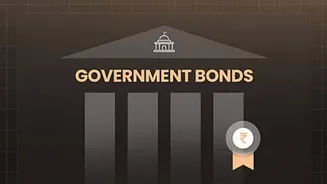Global Trade Headwinds
The global economic environment has recently been characterized by significant upheavals in international trade. Exporters in India are now navigating
a complex network of factors, including escalating tariffs imposed by various countries and a slowdown in demand from key international markets. These trade barriers and the decrease in worldwide consumer appetite have significantly impacted the profitability and financial stability of Indian exporters, leading them to search for effective strategies to maintain their operations amidst these volatile circumstances. This downturn is not isolated; it’s part of a larger pattern where international business faces growing uncertainties, adding more pressure to India's already stressed exporting sector. Such a challenging climate demands adaptive measures to support businesses that are key to the nation's economic progress and international connections. This strategic intervention underscores the RBI's role in promoting the country's economic well-being.
RBI's Strategic Response
To address the financial stress experienced by Indian exporters, the Reserve Bank of India (RBI) initiated a relief package designed to support the exporting community. This critical response showcases the RBI's commitment to stabilize economic conditions and maintain the flow of international trade. A central element of this package involved easing certain regulations under the Foreign Exchange Management Act (FEMA). FEMA rules can be quite complex, particularly in managing foreign currency transactions, and these adjustments offered exporters a greater degree of flexibility in their financial operations. In addition to this, the RBI also adjusted repayment schedules, extending the deadlines for exporters to fulfill their financial obligations. These extensions provided additional breathing room, assisting exporters in managing cash flows and avoiding potential defaults during a period of diminished earnings and strained finances. By taking these actions, the RBI aimed to cushion exporters from the harsher effects of external market issues, ensuring their ability to participate in and benefit from global trade.
FEMA Rule Relaxation Details
The modifications to FEMA rules by the RBI were specifically targeted to grant greater operational freedom to exporters. The specifics of these adjustments involved a critical reevaluation of the regulatory framework applicable to foreign exchange transactions conducted by export-oriented businesses. These relaxations were likely intended to streamline processes related to the management of foreign currency earnings and payments. Moreover, these measures have provided a smoother method of operations and better control over their finances during periods of global trade volatility. The RBI's actions underscore an acknowledgment of the problems faced by exporters and show an active stance in supporting businesses to manage their financial obligations effectively. The intention behind relaxing FEMA rules was to empower exporters to handle their financial activities with greater ease, reduce complexities, and improve their ability to successfully overcome challenges related to international trade. Such an approach aims to promote a more dynamic and competitive export ecosystem.
Repayment Timeline Extensions
A core feature of the RBI's relief package was the extension of repayment deadlines for exporters. This provided welcome flexibility to exporters grappling with disrupted trade and financial strains. Extending repayment timelines enabled exporters to better manage their short-term financial demands, such as vendor payments and operational expenses. By offering a buffer, the RBI provided relief from the immediate pressures that could undermine the stability of export businesses, especially during times of decreased cash flow. These extensions gave exporters extra time to navigate the downturn and recover their financial footing. This type of intervention is a practical illustration of the RBI's dedication to supporting the financial health of the export sector, making sure exporters can stay afloat in the difficult environment caused by external market factors. This proactive step not only offers relief but also boosts the confidence of exporters by showing that the central bank is willing to actively engage in the sector's financial well-being.
Impact on Exporters
The RBI's relief package had significant implications for Indian exporters, helping them to navigate and mitigate the effects of global trade uncertainties. The easing of FEMA regulations provided exporters with more financial agility, decreasing the challenges and the complexities associated with managing foreign exchange transactions. This operational flexibility empowered businesses to adapt to fluctuating market conditions and quickly seize on opportunities. Moreover, the extensions in repayment schedules afforded exporters much-needed relief from the immediate pressures of meeting financial commitments, offering them valuable time to reassess their business strategies and arrange for a steadier economic future. By implementing these measures, the RBI effectively provided a supportive financial foundation for exporters, allowing them to remain operational and continue to contribute to the nation's economic growth even when faced with market turbulence. This strategic support demonstrates the RBI's commitment to ensuring the long-term health and competitiveness of India's export sector.
Broader Economic Implications
The RBI's intervention had wider ramifications for the Indian economy. The measures taken to assist exporters, such as easing FEMA regulations and adjusting repayment timelines, acted as a protective barrier against the negative consequences of global trade disruptions. This ultimately helped the country maintain its export volumes and safeguard its standing in the international market. Because the export sector is a vital component of India's economy, these supportive actions were strategically essential to ensure steady income and generate employment opportunities. The RBI's actions also played a role in stabilizing overall financial markets, decreasing volatility and building trust among investors. In essence, the RBI's initiative not only supported the export sector but also contributed to the macroeconomic stability of India. The swift and strategic approach of the RBI showed a commitment to promoting a resilient and competitive economic environment.
Future Outlook and Actions
Looking ahead, the RBI is likely to continue monitoring the global trade landscape and its impact on Indian exporters. The central bank's readiness to take action to address any new challenges is key to its policy direction. Adapting to evolving market conditions is critical, and the RBI is probably prepared to implement additional measures to address the requirements of the export sector. The RBI is expected to carefully observe the effectiveness of its existing relief package, analyzing how the measures are benefiting exporters and the wider economy. This continuous assessment will help the RBI fine-tune its approach and ensure that its support mechanisms stay relevant and productive. It is very likely that the RBI will maintain close communication with stakeholders, including exporters, industry groups, and financial institutions, to grasp their needs and challenges. By remaining proactive and flexible, the RBI hopes to continue promoting a healthy export environment, ensuring the sustained prosperity of Indian exporters in an era of global economic challenges.














